Replacement needed
I’m a big fan of the small compact rechargeable bicycle lights from Lezyne. I have had a front light for years, but the battery was getting a bit tired and the charging was based on min-USB (?) which in my house is becoming more and more seldom. Everybody seems to be moving towards USB-C as the industri standard and I welcome it with open arms. It is a much needed simplification if you ask me and greatly reduces the need for multiple chargers in a household.
Also, the output from bicycle lights has improved massively even over the last few years, and I wanted to tap into this development and see what a brand new light could do.
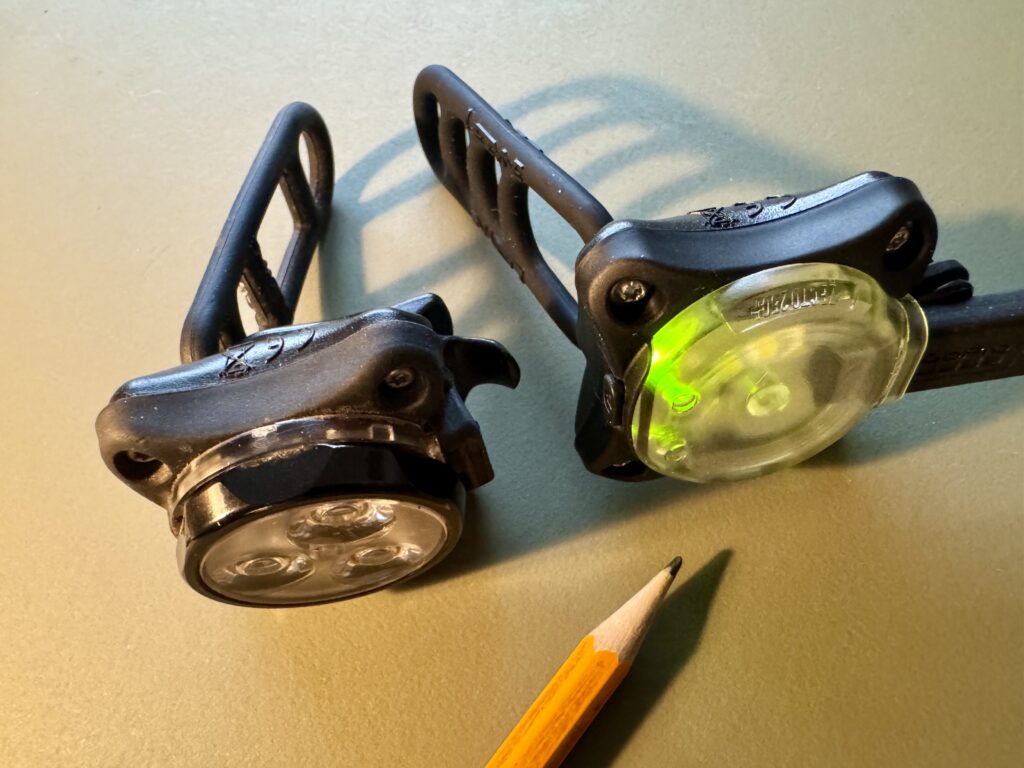
Here the Zecto Drive 250+ Bicycle Front Light is to the right and my trusty copy of what I believe to be an earlier model. The pencil is just there to give a sense of proportions.I really like the concept of this Zecto Drive light. It is small, compact (fits a pocket easily) and delivers plenty of run time per charging for my city life needs. But if you need a lot of Lumen output, you may want to look for other options.
Lezyne Zecto Drive 250+
When it arrives, the Zecto Drive 250+ does not make a big impression. It is mounted on a small piece of black cardboard with a few instructions and a QR code for more elaborate instructions and specifications. I welcome this as it minimizes the packaging that I have to get rid of after “unboxing” the product.
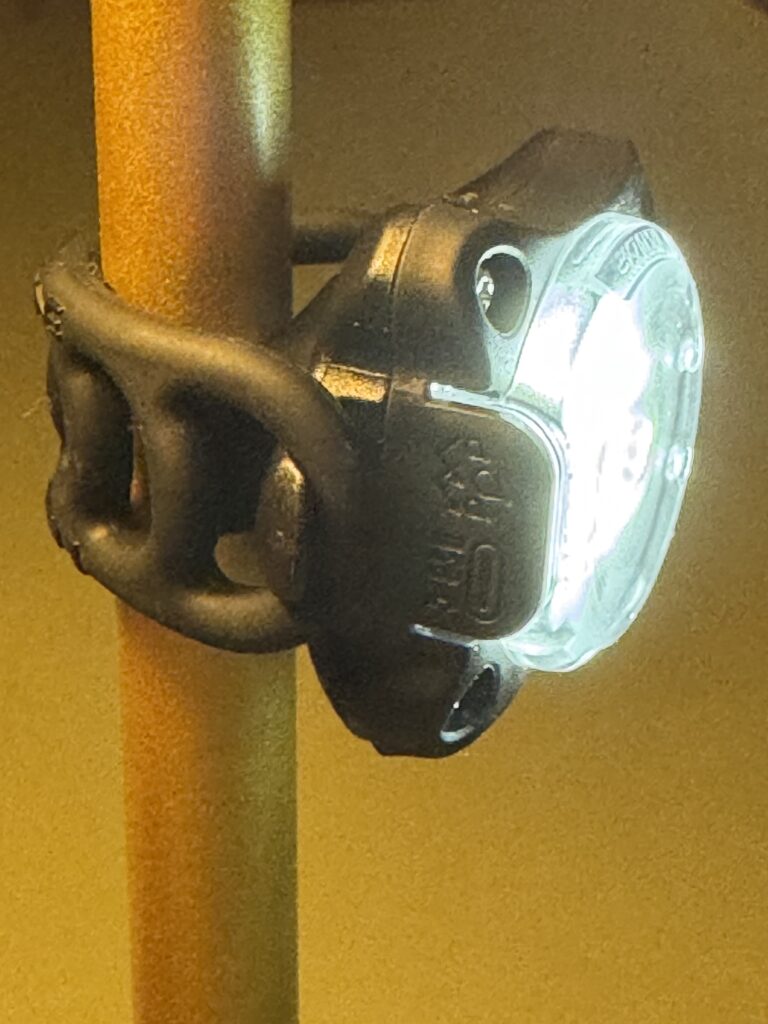
You can mount the light using the rubberized “belt” that can reach around the handlebar on your bike, or you can use the clip to mount it in a belt or the like.
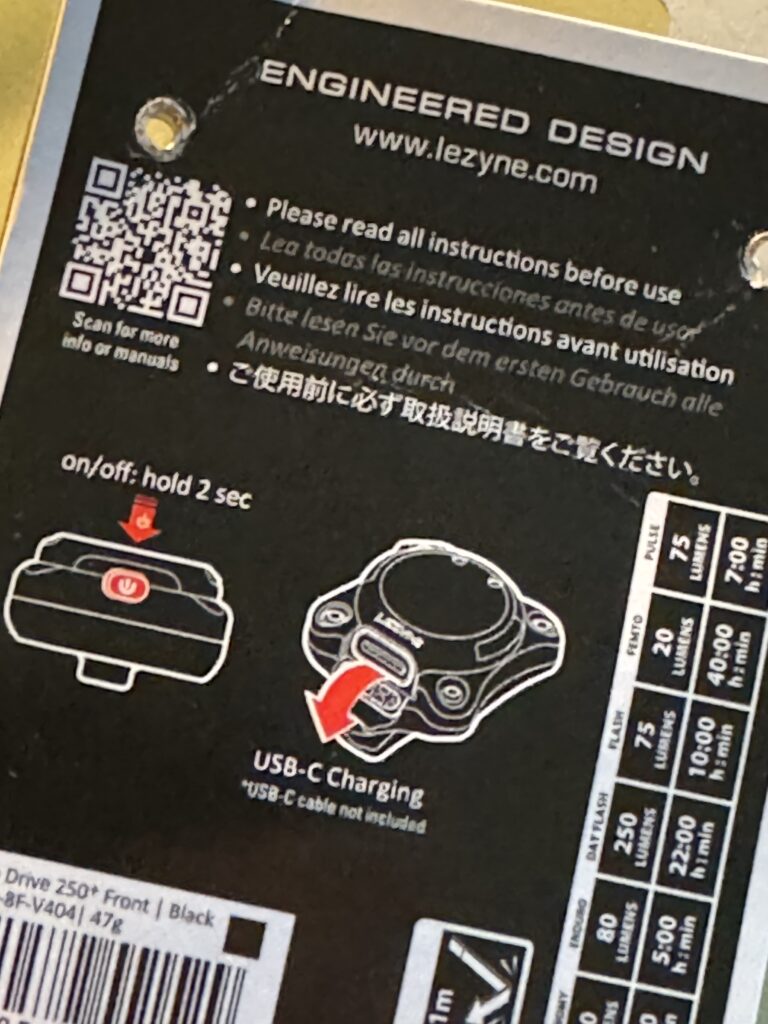
The first thing I did was to put the Lezyne in the charger – there is no USB cable supplied, but I have plenty already and found an available USB-C cable in my existing park of chargers next to my desktop. When it charges, the green LED on the front of the light flashes green.
When the LED turns on steady green, the charging is complete. A little hinged rubber cover can then be closed in order to protect the USB-C port from the elements. I believe this is a precondition for the IPX7 classification. I am no expert in these classifications, but understand that the Lexyne light can be submerged into 1 meter of water and still be functional. We do have much rain in Copenhagen where I live, but I doubt I will ever make use of this impressive capability!
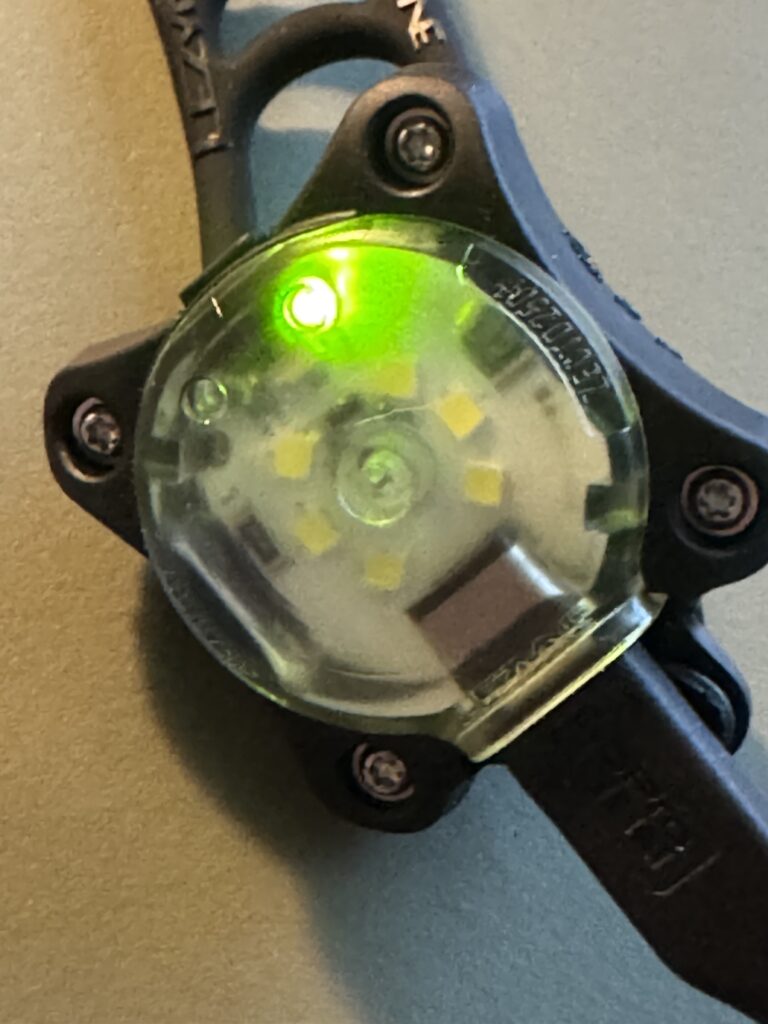
To turn the light on or off, you press the on/off switch for 2 seconds. This is a smart design, as it prevents the light from being turned on or off by accident when not in use, i.e. lying in a bag or a pocket.
You have to apply a good amount of force to the button before it reacts. I have gotten used to this as I have used the Lezyne lights for several years, but you may want to test this IRL in your local bicycle shop before you invest.
Light modes
If you hit the on/off switch quickly when the light is on, the light toggles through 6 light modes as depicted below. These are not explained in great detail, but as you can see the first 2 gives steady light and the next 3 involves flashing light and the final one pulses between strong and less strong.

The Lezyne remembers the mode you used the last time, so when you long press the light to turn it on, it starts up in the mode you used when you long pressed it to turn it off. This is convenient if you – like me – are a creature of habit and quickly identify a preferred mode.
Without being an expert, I would think that the flashing modes is better if you want to be seen by others in the traffic, whereas the steady modes are better if you drive where there is little other light like a path in the woods. I mainly bike in the city with plenty of light available, so I turn on the flash mode to helps others see me.
In terms of battery life, the Lezyne offers so much more than I need. I bike maybe 5-10 kilometers on the same day and the Lezyne never runs flat with this kind of use.
The light
I’m not a mountain biker riding through pitch black woods for several hours! I am a simple cyclist riding from one end of Copenhagen to the other during winter time. Trust me, a good light is needed in order for others to notice you.
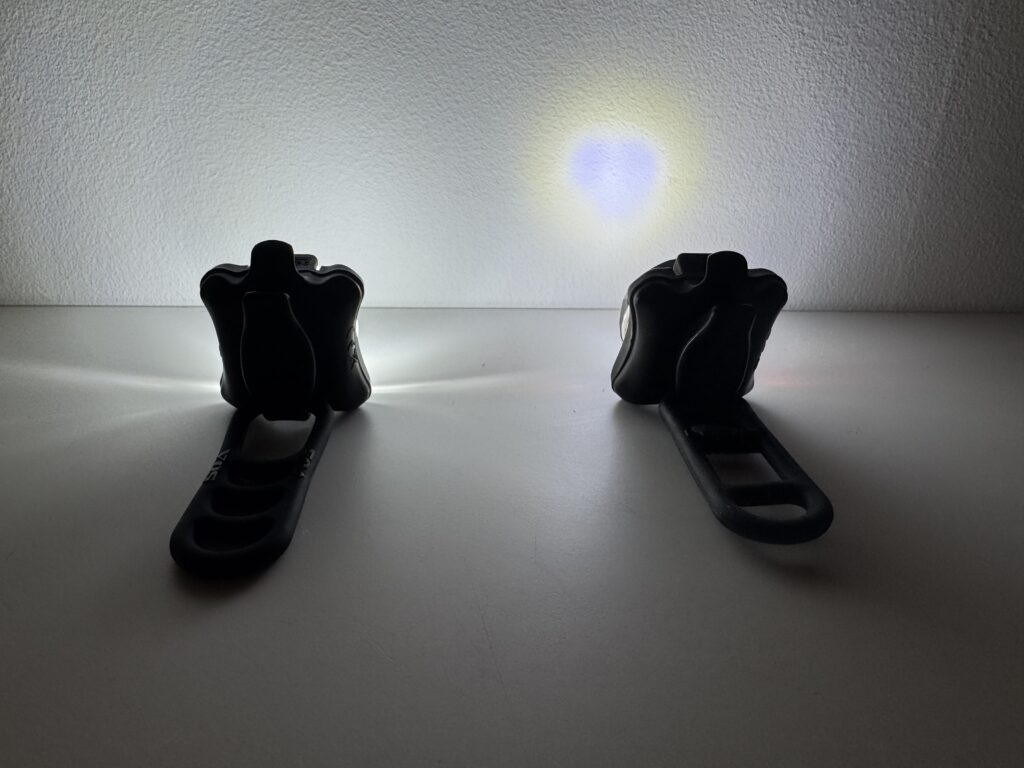
Comparing the old Lezyne with the new, it seems to me that the new light throws much more light to the sides and this must be a bonus for visibility from the sides. Also, the 6 LED’s in the new light gives much more power than the 3 LED’s in the old one.
However, I have read experts say that you need at least 200 Lumens in output for riding a bicycle in the city. And only in one of the flashing modes does the Lezyne light deliver that kind of output. That said, I find the light to be fairly strong but be aware that this light may be at the weak end of the scale in terms of safety. I guess that is the price you pay for the light being so compact and light.
Summary
I found this light on sale for around 37 EUR. Here in Denmark where I live, prices are not exactly low, and certainly not when compared to the US. However, looking at the prices on Amazon here, this seems to be a sharp price. However, there are many bicycle lights out there that you can get in a much more budget friendly price range.
Pros
- Small and compact – easy to bring along
- Solid build quality
- Gives a good strong light, also visible from an angle
- Charges via USB-C
- Can take some really bad weather and still be operational (IPX7)
- Easy to mount on the bicycle
- Several options for light mode
Cons
- May not be strong enough for your needs
- You may find the price too steep
- The on/off button requires some force to be operated
You may also like
Review: Garmin Varia RTL516 Rearview Radar and Taillight
Review: Bosch VitaBoost blender MMBH4P3B
Review: Timbuk2 Heritage Classic S Messenger bag multi-colored
